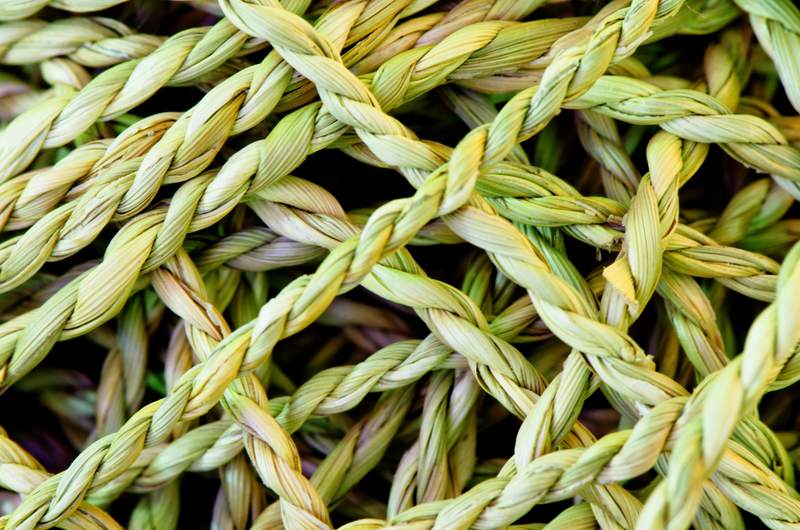The woods around you will give you exactly what you need. The plants below will provide the material to make the perfect survival cordage.
Once you've identified the right plants, you can follow the steps to master string-making. Below are 2 different ways to make cordage from plants. The thigh rolling method is slightly quicker, but both will do the trick. If you're still having trouble after reading through the steps, you can watch Youtube tutorials for further help!
Plants useful for making cordage:
Stinging Nettle: To obtain the fiber, the dry stems had to be pounded to remove the woody parts.
Milkweed: From personal experience, I recommend harvesting it when dry. Use the same processing method as you would do for stinging nettle.
Dogbane: Also known as “Indian Hemp” this plant was probably the most widespread kind of fiber used for making cordage.
Sagebrush: Although this bark is not strong, it has a wide variety of uses.
Hawthorn or Thornapple: The bark gets stronger when whet, but it becomes a little stiff when dry.
The steps required for making cordage by hand:
- Two strips of fiber are selected and held in the left hand between the thumb and forefinger.
- Identify the fiber which is the farthest from the body. Grasp it with the fingers of the right hand and twist clockwise a few turns.
- Get the twisted strand and lay it counterclockwise over the remaining strand to become the once closes to the body.
- The second strand, which is now the farthest from the body, is twisted a few turns. Lay it over the first stand exactly as before. Continue doing so until the ends of the strands are reached
- New lengths of fiber as spliced on at this point. This is done by twisting the last two inches of the ends of the new fibers and continuing the process of twisting and folding. It is recommended to alternate the lengths of the stands so that the splices are not lined up in the finished string.
The steps required for making cordage using the thigh rolling method:
- Use two small bunches of fibers that are of different length. Hold the ends of the two strands in your left hand
- Drape their other ends over your right thigh.
- Roll the strands down your thigh using the palm and thumb of your right hand so that the strands ‘S’ twist up.
- At the end of this roll, release the hold of your left hand on the fibers and allow the stands to “Z” twist in the opposite direction.
- Sometimes a quick reverse roll of the left hand on the twisted cord will help tighten the ply.
The key to making even cordage is to continually splice in a new strand of fiber every couple of inches, well before the existing strands start to run short.
Let us know if you were able to make cordage using the steps above! What is your advice for making string in the wilderness?
Article Source: Prepper's Will

This is what I like to see
The first technique is called reverse wrap two-ply chordage.
Code Lundine from Dual Survival is very good at using and demonstrating this technique.
Matt Graham from Dude, You’re Screwed and Dual Survival is also very good at using this technique.
The YouTube channel Primitive Technology has a video where he uses this technique to make chordage and then weaves the chordage into a mat.